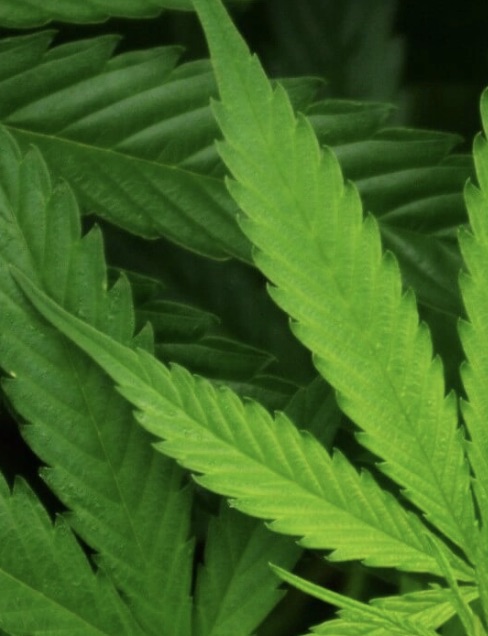With class action lawsuits in full swing against opiate manufacturers, the search for alternatives to opioids for pain management has become a major priority in United States healthcare.
A new wave of naturally-derived analgesics are coming onto the market to redress this need.
While naturally-derived analgesics have been used since antiquity, they have been widely overlooked since the age of science and technology. However, when more than 130 people die in America daily as a result of opiate abuse, it leads us to question the current status quo. Thus, now, we sit on the brink of a revolution in natural healthcare — whereupon ancient natural healthcare meets modern science.
Opioids as a mainstay in treatment could be a thing of the past — left for our history books to teach us how we returned to natural healthcare as a first order of treatment.
What are Opioids and Opiates?
 Opioids and opiates are highly addictive narcotics naturally derived from the opium poppy plant or from slightly altered components of opium such as codeine, morphine, and heroin.
Opioids and opiates are highly addictive narcotics naturally derived from the opium poppy plant or from slightly altered components of opium such as codeine, morphine, and heroin.
The term, opioid, is used as a general name for both opioids and opiates, however opioids are actually the synthetic versions of opiates formulated in laboratories. You’ve probably heard of oxycodone, prescribed under the brand OxyContin, and fentanyl, sold under the brand Duragesic — two of the most popular synthetic opioids.
When you’re facing surgery or serious pain, opioids can feel like a life-saver. They relax the body and mute discomfort, which is why they have been traditionally used post-surgery and for people coping with serious injuries or painful diseases at least since 3400 B.C. But they have not been only used to treat pain. They’ve also been used to treat coughs and diarrhea as well.
Opioids in Your Medications: Types of Opioids
Prescription opioids come in tablet, capsule, liquid, and patch form. They can be sourced directly from a poppy plant, synthesized by scientists in a laboratory or a mixture of both. Medications made from one or more of the following ingredients can lead to painkiller addiction and overdose:
| Name of opioid | Natural, Synthetic or a Mix |
| Codeine | Naturally derived from the opium poppy plant |
| Hydrocodone (Vicodin, Hycodan, Zohydro ER) | Semi-synthetic opioids, manufactured in labs with natural and synthetic ingredients |
| Morphine (MS Contin, Kadian) | Naturally derived from the opium poppy plant |
| Oxycodone (Oxycontin, Oxecta Percocet) | Semi-synthetic opioids, manufactured in labs with natural and synthetic ingredients |
| Hydromorphone (Dilaudid) | Synthesized from morphine |
| Fentanyl (Duragesic) | Fully synthetic |
| Methadone | Fully synthetic |
| Heroin | Synthesized from morphine. Illegal. |
Controlling Opiates
Interestingly, codeine was featured in over-the-counter products not too long ago.
In the 1990’s, you would be sure to find curious teenagers “roboing” at nearly any unsupervised high school party. That is, the teenagers would purposely drink an excess of Robutussin cough syrup in order to achieve a high without stealing alcohol or obtaining illegal drugs. By 2014, the Drug Enforcement Agency (DEA) believed that 1 in 10 teenagers abused the substance, thus they rescheduled codeine at the federal and state level as a prescription narcotic.
In 2018, the U.S. Food and Drug Administration banned opioid-containing prescription medicines to treat coughs in any pediatric population.
“It’s critical that we protect children from unnecessary exposure to prescription cough medicines containing codeine or hydrocodone,” FDA Commissioner Dr. Scott Gottlieb said in a news release. “At the same time we’re taking steps to help reassure parents that treating the common cough and cold is possible without using opioid-containing products.
That said, controlling opiates has hardly minimized abuse. In fact, it spawned a nationwide epidemic.
At the present, The Centers for Disease Control and Prevention (CDC) estimates a $78.5 billion a year “economic burden” of prescription opioid misuse alone in the United States, which accounts for healthcare, lost productivity, addiction treatment, and criminal justice involvement.”
Contrary to what it may appear, we have not always had an opiate epidemic on our hands.
How Did the Opioid Epidemic Begin?
Dr. Russel Portenoy was inspired by morphine’s ability to comfort cancer patients in their dying days in the 1970’s.
Eureka! It hit him that he could bring pain relief to muscle and joint sufferers as well. Portenoy believed he had the “fix all” solution.
Despite political and public concern about potential addiction, Portenay chalked it up to a stigma and outdated world-views that could interfere with modern medicine.
He soon convinced the medical boards and those who followed that he could offer relief for chronic pain sufferers. He convinced them that opioids could not only improve patients’ quality of life; it would also help repair family dynamics associated with chronic pain.
Then in the late 1990s, pharmaceutical companies in the U.S. launched an aggressive marketing campaign with key opinion leaders to quell the medical community’s fears that opioid pain relievers may cause addiction. Healthcare providers began to prescribe opioids at greater rates. Henceforth, it became the go-to treatment for pain.
And sadly, the rate of abuse, addiction, and overdoses steadily inclined.
Addiction to Prescription Opioids
Fast forward to the present. Now, over 2 million Americans are addicted to prescription pain relievers — many turning to black market prescription opioids and illicit drugs like heroin to get their fix.
If you’ve ever experienced that dreamy, post-operative “all is good in the world” high, you can imagine why opioids are so addictive. They have an uncanny way of masking both your physical and emotional pain.
Opioids produce a sense of wellbeing, and many people suffering from pain become addicted to that feeling. But it’s not only the feeling that gets people hooked.
They are highly physically addictive.
The Mayo Clinic states, “After just five days of prescription opioid use, the likelihood that you’ll develop long-term dependence on these drugs rises steeply —increasing your risk of eventual addiction and overdose.”
Some people who use prescription opioids develop tolerance to the drug, meaning they need progressively more of it to get relief. People feeling the pull towards needing more of the drug in order to reach the desired effect may misuse their prescriptions and take larger quantities than prescribed.
And if you are physically addicted, the withdrawal symptoms can be excruciating. Within eight hours since the last dose, you can already start to experience a range of flu-like symptoms including a running nose, sweating, stomach aches, abdominal cramps, diarrhea, vomiting, and more. In addition, you can experience extreme anxiety, restlessness, and agitation. This is why addicts become extremely belligerent as they find any means possible to get more opioids.
It’s not the drug that makes them difficult so much as the painful withdrawals that are making them sick.
That’s why prevention is the best treatment — starting with changes in healthcare. Luckily, changes are happening. But we are just at the beginning. The U.S. Department of Health and Human Services has set trans-agency efforts in place to create alternative pain treatments that could circumvent addiction concerns and limit the use of opioids. Moreover, complementary and alternative medicine is ramping up its research efforts.
A revolution in pain relief is coming.
Treating Pain Without Opioids
Since the opioid epidemic took hold of the United States, health authorities have made it a mission to encourage the development of non-opioid pain treatments. Alternative options for pain include non-opioid prescriptions and over-the-counter treatments, physical therapy, massage, acupuncture, and topical painkillers, or analgesics. All of them have less risk of harmful side-effects and addiction., particularly if they are natural.
Topical Pain Relief: An Alternative for Mild to Moderate Pain
In the search for other solutions for pain besides opioids and oral painkillers, some people are turning to topical painkillers. Topical pain medications are pain medications that are applied externally to the skin. They enable people to apply pain-relief solutions to the area needing pain alleviation.
A study by Cochrane Pain, Palliative and Supportive Care Group shows that topical analgesic drugs are used to treat an array of painful conditions. Topical nonsteroidal anti-inflammatory drugs (NSAIDs) or topical rubefacients are used for strains and sprains. According to the study, topical NSAIDs or low-dose topical capsaicin could help people with arthritis by temporarily relieving their pain. For neuropathic pain, patches with local anesthetics or high-dose topical capsaicin could help in relief, however since they are a derivative of hot peppers, they can irritate the skin.
Topical pain solutions come in cream, lotion, ointment, gel, spray, or patch form. They can contain analgesics, naturally-derived ingredients, synthetic ingredients, or a mixture. Popular ingredients include menthol, methyl salicylate, capsaicin, and camphor.
Menthol and Camphor
Menthol and camphor are known as pain-relieving counter-irritants because they confuse the source of pain, blocking its signal.
Menthol is an organic compound that can be made synthetically or obtained from peppermint or other mint oils. When menthol is added to pharmaceuticals, it has a counterirritant effect on skin, and thus produces a local analgesic or anesthetic effect.
Camphor is an organic compound that is extracted from the wood of camphor trees or evergreen pine trees. Camphor oil is used in topical painkillers because it has analgesic properties and absorbs easily through the skin.
CBDMEDIC™’s proprietary ointments and creams comprise these two naturally-derived active ingredients to help speed absorption of pain-relieving analgesics to the area of discomfort. The products are blended with CBD hemp oil (Cannabis sativa L), jojoba seed oil, beeswax and other emollients to soothe the skin and speed absorption. You can rest assured that it is THC-free and non-psychoactive. It will not get you high or cause you to fail a THC drug test.
These natural solutions are part of the CBDMEDIC family of products that are individually formulated to relieve targeted pain associated with specific medical conditions and areas of the body susceptible to injury.
The bottom line: You can minimize your pain without dangerous prescriptions. And you can do it naturally.
Disclaimer: This information is for educational purposes only. It has not been approved by the FDA to diagnose, treat, prevent, cure, or mitigate any diseases or conditions. We use CBD in our products for cosmetic purposes only.


